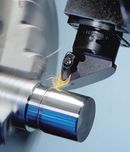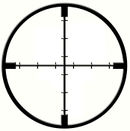Difference between revisions of "Control modes"
From Granite Devices Knowledge Wiki
| [checked revision] | [checked revision] |
| Line 1: | Line 1: | ||
There are three main control modes in motion & motor control are '''torque''', '''velocity''' and '''position''' control. | There are three main control modes in motion & motor control are '''torque''', '''velocity''' and '''position''' control. | ||
==Torque control== | ==Torque control== | ||
| + | [[File:Force-torque-wrench.jpg|thumb|130px]] | ||
Torque control mode makes motor a torque or force transducer. I.e. user sets torque reference to 1 Nm, then motor will produce 1 Nm torque regardless of spinning speed. | Torque control mode makes motor a torque or force transducer. I.e. user sets torque reference to 1 Nm, then motor will produce 1 Nm torque regardless of spinning speed. | ||
| Line 10: | Line 11: | ||
*Non-motion applications: high current LED & Peltier driver when drive used just as adjustable current source | *Non-motion applications: high current LED & Peltier driver when drive used just as adjustable current source | ||
==Velocity control== | ==Velocity control== | ||
| + | [[File:Turning.jpg|thumb|130px]] | ||
Goal of velocity control is to regulate motor speed. I.e. if user velocity reference is 500 rpm, then motor attempts to rotate exactly at 500 rpm no matter how much load is attached to motor. | Goal of velocity control is to regulate motor speed. I.e. if user velocity reference is 500 rpm, then motor attempts to rotate exactly at 500 rpm no matter how much load is attached to motor. | ||
| Line 18: | Line 20: | ||
*Position control when used with external or internal position controller | *Position control when used with external or internal position controller | ||
==Position control== | ==Position control== | ||
| + | [[File:Positioning-Cross-Hairs.jpg|thumb|130px]] | ||
Position control mode attempts to provide precision positioning. Motor follows reference set point and if set point is kept constant, motor holds position even if external forces attempt to displace it. | Position control mode attempts to provide precision positioning. Motor follows reference set point and if set point is kept constant, motor holds position even if external forces attempt to displace it. | ||
Revision as of 21:05, 18 April 2012
There are three main control modes in motion & motor control are torque, velocity and position control.
Torque control
Torque control mode makes motor a torque or force transducer. I.e. user sets torque reference to 1 Nm, then motor will produce 1 Nm torque regardless of spinning speed.
- Typical applications
- Screw tightening robot
- Racing/flight simulators
- Feeding/pulling
- Cascaded controller after velocity or position controller
- Non-motion applications: high current LED & Peltier driver when drive used just as adjustable current source
Velocity control
Goal of velocity control is to regulate motor speed. I.e. if user velocity reference is 500 rpm, then motor attempts to rotate exactly at 500 rpm no matter how much load is attached to motor.
- Typical applications
- Spindles
- Feeding
- Fans & pumps
- Position control when used with external or internal position controller
Position control
Position control mode attempts to provide precision positioning. Motor follows reference set point and if set point is kept constant, motor holds position even if external forces attempt to displace it.
- Typical applications
- CNC
- Pick & place machines
- 2D/3D printing
- Robotics


